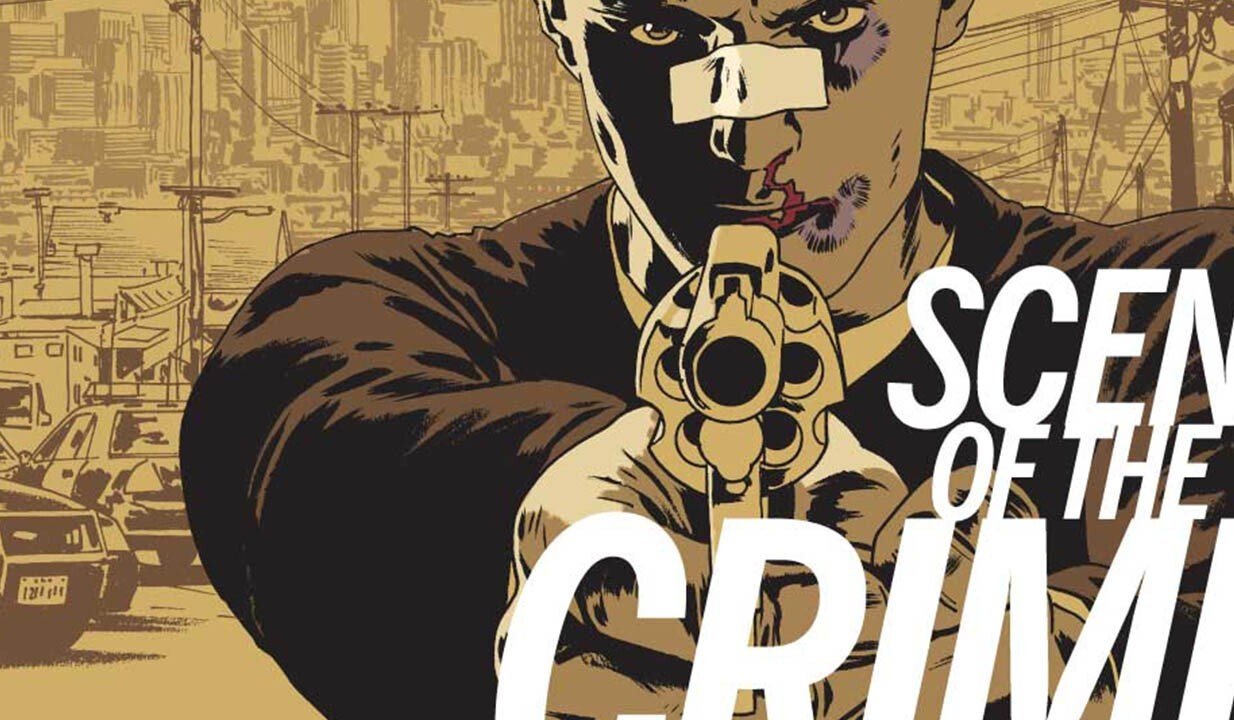When a noir story is handled properly it is a grotesquerie of mistakes; an unfolding of shadows that reveal dark truths about its subjects while showcasing the underside of the world we live in. Scene of the Crime does just that, and is a thrill to read. Any fan of contemporary crime fiction should be familiar with the name Ed Brubaker, and for good reason, his brilliant ideas and ability to structure a noir setting have made him the renowned writer he is today. Scene of the Crime is one of Brubaker’s early works, and is a great example of what he can do. This is to say nothing of the artwork in Scene of the Crime, Lark’s art and, later in the collection, Phillips inks create the sharp contrasts that are needed to define Brubaker’s space, and the images, though sometimes horrific, are a joy read.
The main story of Scene of the Crime, to vastly over-simplify, revolves around a convoluted murder case. Holding nothing back, Brubaker throws readers into a twisted world shaped by the deep-seated scars of the past. Each character is artfully fleshed out, usually tied to the painful past that shapes their actions within the story. The characters feel natural, if horrific at times, and the unfolding of their true histories is thrilling to observe. The extension of this quality separates Scene of the Crime from other noir tales in that the main protagonist, Jack Herriman, has a past nearly as convoluted as everyone else; Jack isn’t as smooth as many noir protagonists often are, and this gritty quality makes him seem much more legitimate within the world Brubaker has written. Jack’s complexity also spills over into the narrative, his relationships change throughout the book, and he evolves as a character, something which, if handled poorly, could have taken away from the story as a whole.

Evoking the classic noir narrative, Brubaker makes heavy use of narration. This isn’t to say he overuses it though, it feels balanced and is absent when narration wouldn’t fit or would feel clunky. Instead it helps to force readers into Jack’s perspective and ensures that the narrative never becomes too dense.
The art of Scene of the Crime is a powerful demonstration of the noir genre, as reliant on heavy blacks and strong inking, as the tales are upon betrayal and secret motives. The stark contrasts and deep shadows set the stage for the story and will pull you into the setting. Lark does a great job with facial expressions as well, adding to the range of emotions and the complexities of the characters.
In the back of the book are a few interesting extras that are definitely worth looking at if you’ve enjoyed the book as I have. A short, one-shot issue ofScene of the Crime that takes place before the main narrative of the book provides a final taste of the characters and harkens to the fact that Scene of the Crime was originally planned as an ongoing series before, sadly, being dropped. There is also a series of pages from Brubaker’s original pitch, reproduced alongside Brubaker’s narrative of how Scene of the Crime came to be and what effect it had on him as a writer. Finally there are a few pages that show some of Lark’s pencilled pages, and Phillips inks.
All in all Scene of the Crime is a great work that I highly recommend to any fan, however passing, of Brubaker or the crime novel more generally. More than being simply a well structured narrative Scene of the Crime will drive you forward, fill you with anxiety, and leave you wanting more.





